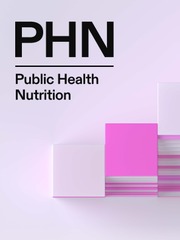No CrossRef data available.
Article contents
Prediction of fat-free mass and fat mass from bioimpedance spectroscopy and anthropometry: a validation study in 7- to 9-year-old Kuwaiti children
Published online by Cambridge University Press: 21 April 2025
Abstract
Childhood obesity is increasing in many countries, including Kuwait. Currently, adiposity is most commonly assessed from simple anthropometric measurements, e.g. height and weight or combined as body mass index (BMI). This is despite these surrogate measurements being poor indices of adiposity. Bioelectrical impedance analysis (BIA) is a popular method for the assessment of body composition providing a measurement of adiposity as absolute fat mass (FM) or FM expressed as a percentage of body weight (%BF). BIA is, however, an indirect predictive method. This study developed a BIA-based prediction equation for body composition assessment in Kuwaiti children and, additionally, a prediction equation for %BF based on sum of skin-fold (SSF) thickness measurements.
A cross-sectional design was used with primary school recruitment.
School population in Kuwait City; in-clinic assessments.
158 Kuwaiti children aged 7-9 years. Body composition assessed using bioimpedance spectroscopy and skin-folds with prediction equations generate against deuterium dilution measurement of total body water and fat-free mass (FFM) as reference.
The newly developed and cross-validated BIA equation predicted FFM with minimal bias (< 1%) and acceptable 2 standard deviation limits of agreement (±1.6 kg equivalent to ±10%) improving on the predictive performance of comparable published equations. Similarly, SSF predicted %BF with small bias (0.2 %BF) but relatively wide limits of agreement (±7 %BF).
These new equations are suitable for practical use for nutritional assessment in Kuwaiti children, particularly in epidemiological or public health settings although their applicability in other populations requires further research.
Keywords
- Type
- Research Paper
- Information
- Creative Commons
- This is an Open Access article, distributed under the terms of the Creative Commons Attribution licence (http://creativecommons.org/licenses/by/4.0/), which permits unrestricted re-use, distribution and reproduction, provided the original article is properly cited.
- Copyright
- © The Author(s), 2025. Published by Cambridge University Press on behalf of The Nutrition Society


